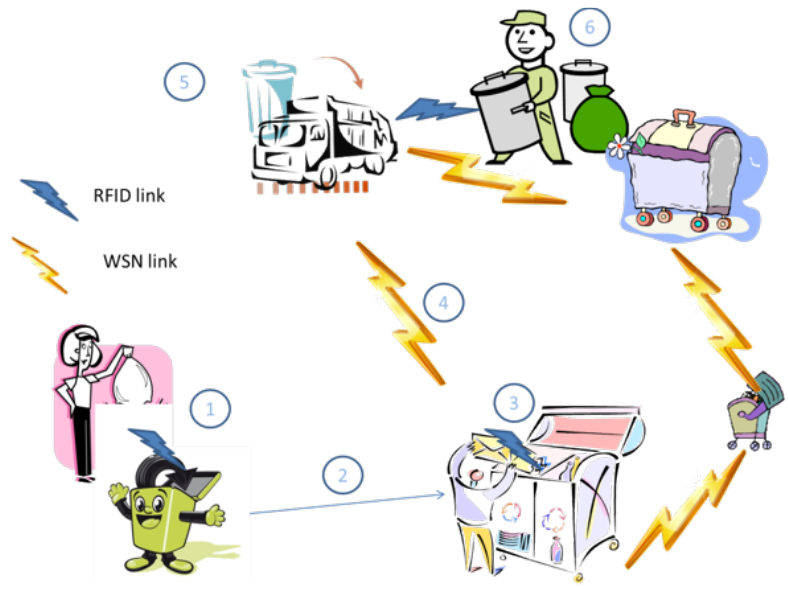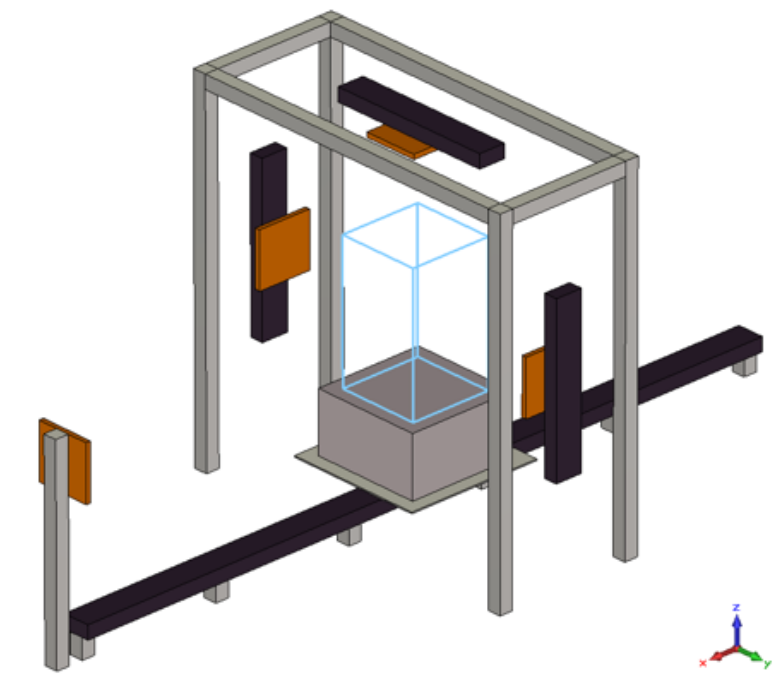Section: Partnerships and Cooperations
National Initiatives
Bin That Thinks
-
Partners: ACES (Inria Rennes) and POPS (Inria Lilles), Veolia Propreté, and Etineo (a start up company focused on M2M communications and ambient networking)
BinThatThinks is an ANR project funded by the ANR Ecotech program, that is ended in December 2013. It aimed at sorting domestic waste at early stage in order to reduce costs and risks in waste sorting center, as well as helping citizens to adopt environment respectful. To this end, Bin That Think introduced a new system for (1) identifying the waste which involve a reject during waste collection, (2) detecting incompatible products and (3) implementing a reporting infrastructure enabling an efficient management/planning of the waste collecting process.
An infrastructure of smart bins was designed. This infrastructure leverage on waste identification mechanism based on self describing objects, helping user to sort their waste correctly, using either QR codes or RFID technologies. Wastes are grouped in smart bags, that can be read to determine their content. A given bin can accept or rejet wastes depending on the sorting policy, or to prevent hazardous conditions to happen. Waste identification and wastes/bins interactions were the main focus of ACES in the project. The second important aspect of the project is the communication infrastructure, which was studies by Inria Fun. Smart bins are connected together using ambient networks taking advantage of the city streets topology: this allow the balanced use of short range and low power communication interface between the nodes and cellular communication interface, prolonging the life of the network. A thesis on this topic was defended in November 2013. A prototype was implemented and integrated as a demonstrator Etineo, a company specialized in M2M communications.
Pervasive_RFID
Pervasive_RFID is a joint effort (within the CominLabs initiative, see http://www.cominlabs.ueb.eu/ ) started in July 2013 with IETR (institut d'électronique et de télécommunications de Rennes) to study and design innovative RFID reading protocols in the context of pervasive computing applications. Some limitations of existing RFID technology become challenging: unlike standard RFID application scenarios, pervasive computing often involves uncontrolled environment for RFID, where tags and reader have to operate in much more difficult situations that those usually encountered or expected for classical RFID systems.
RFID technology is to avoid missing tags when reading multiple objects, as reading reliability is affected by various effects such shadowing or wave power absorption by some materials. The usual applications of RFID operate in a controlled environment in order to reduce the risk of missing tags while scanning objects.
In pervasive computing applications, a controlled reading environment is extremely difficult to achieve, as one of the principle is to enhance existing processes "in situ", unlike the controlled conditions that can be found in industrial processes. Consider for example a logistic application, where RFID tags could be used on items inside a package in order to check for its integrity along the shipping process. Tags would likely be placed randomly on items inside the package, and reading conditions would be variable depending on where the package is checked.
RFID operation in uncontrolled environments is challenging because RFID performance is affected by multiple parameters, in particular:
In controlled environment, the difficulty to read tags can be limited by using the appropriate parameters to maximize the RFID performance for the application. But in many cases, it is needed to read large number of objects of various nature, arranged randomly in a given area or container. Most pervasive computing applications fall in this context.
At the software level, RFID inventory reliability issue is usually addressed by anti-collisions mechanisms and redundancy mechanisms. Anti-collisions protocols limit the risk of data corruption when multiples tags have to reply to an inventory request. Redundancy is often implemented in RFID readers by aggregating the results of multiple inventory requests over a time frame, to give the tags multiple opportunities to reply. While useful, these strategies cannot ensure that a given inventory is valid or not (in other words, one or more tags may be missing without being noticed). We propose to address this issue with an original approach based on integrity checking, developed by ACES.
In situations where we have to read large collection of objects of various types, the performance is difficult to predict but may still be adequate for a given application. For example, some application can tolerate missing some tags, provided that miss read probability could be characterized. In some cases, read reliability could be improved using mechanical approaches, such as introducing movements in objects or antenna to introduce radio diversity during read. Finally, distributed data structure can be used over a set of tags to be used to mitigate the impact of mis-read (by using data redundancy) and to help the reading protocol by integrating hints about the tag set collection being read.
Our objective is to study extensively by experimentation the behavior of existing RFID solutions in the context of uncontrolled environment (meaning, random placement of tags on objects mixing various materials) in order to characterize their real-world performance regarding the parameters of such as tags numbers, density, frequencies, reader antenna design, dynamicity of objects (movements), etc. From these experimentations, we would like to identify the conditions that are favorable to acceptable performance, and the way where there are hopes of improvement with specific design for these difficult environments. These results should also allow improving the performance : high level integrity checks can guide low level operations by determining whether inventories are complete or not. This cross layer strategy should enable faster are more efficient inventory protocols, as we have shown in [3] where some first results of this approach are presented.
The first step in the project is the implementation of an experiment test bed in order to support the experiment campaign. This task involves a significant engineering effort, which is ongoing. The following figures shows the elements of the testbed being built, featuring multi-axis mobile RFID antenna that we will driven by the high level protocols to use radio diversity, and a target container which will support custom designed arrangement of tags that are challenging to read by standard RFID configurations.




